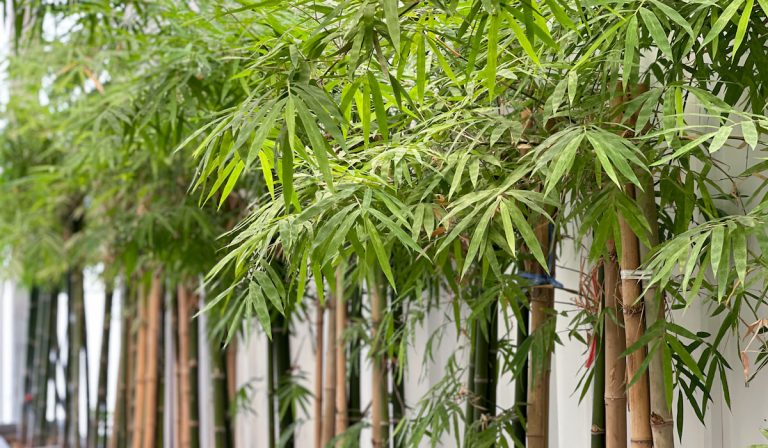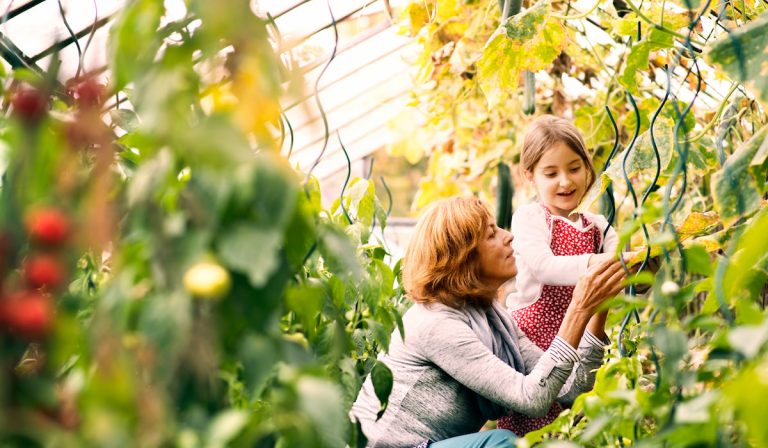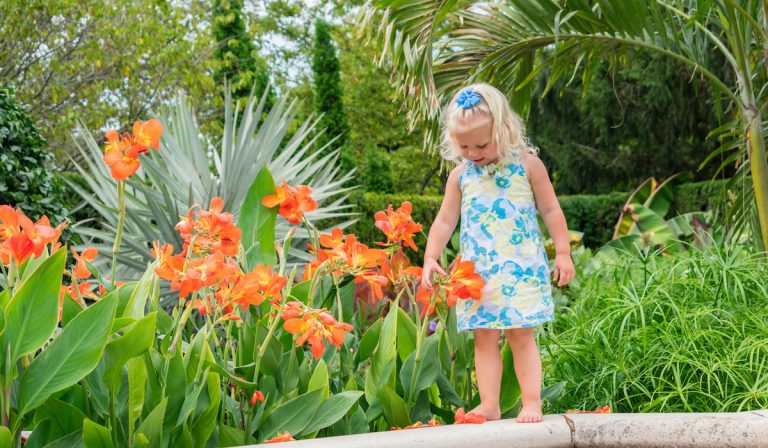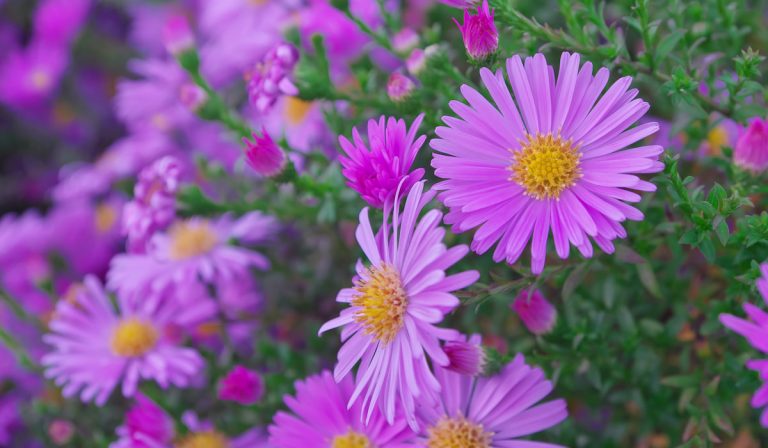Feng Shui Plants for the Living Room
If you are new to the whole Feng Shui practice, here is a little introduction.
Feng Shui is all about organizing living spaces in a way that promotes balance in nature.
The philosophy of Feng Shui is to promote coordination between individuals and their environment.
When practicing Feng Shui, a lot goes into getting it right.
Luckily, there is the Bagua Map to guide your Feng Shui practice according to the state of your affairs.
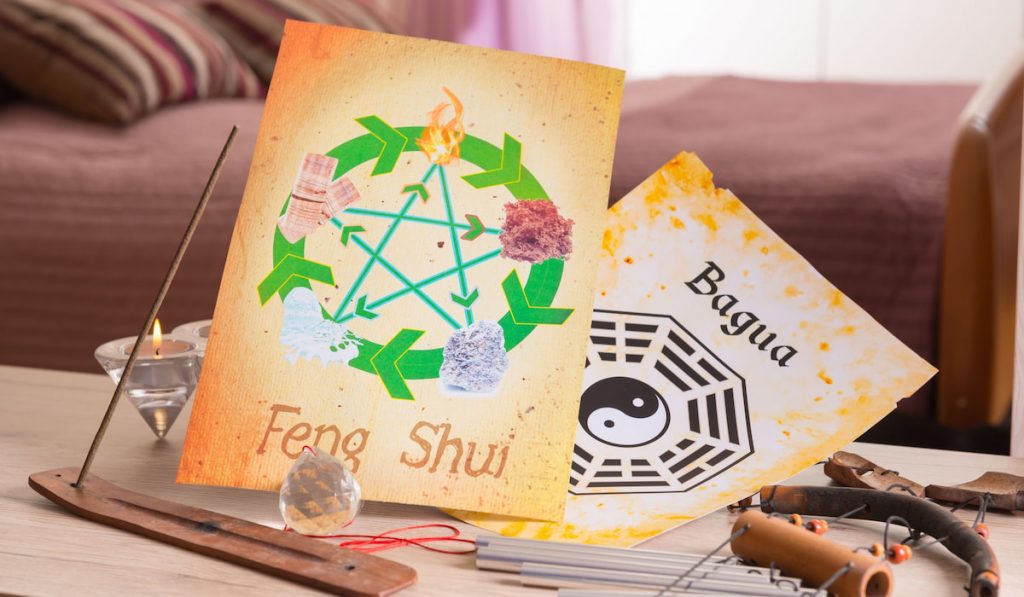
The core of Feng Shui is to regulate and balance energy.
This essence is captured in the subset of the eight Bagua areas.
One of the crucial subsets of the Bagua areas is the five elements.
Each element represents a particular type of energy and can be strengthened using various objects from nature.
The wood element, for instance, brings the energy of action and growth, and it can be strengthened using houseplants.
In line with that, our focus in this article is on Feng Shui Plants for living rooms.
So, if you desire a piece to draw nourishing energy your way, read on.
Table of Contents
Boston Fern

Boston Fern, also called Fishbone Fern and Sword Fern, carries an air of warmth.
It is a large bushy plant beautiful enough to dazzle most types of rooms.
With the trailing leaves on them, they are both beautiful and welcoming.
With sufficient light, Boston Ferns will thrive indoors.
They grow between 16 and 35 inches with fern fronds as long as 0.6-8 feet. Boston Ferns can be used in hanging baskets.
Alternatively, they could be used to fill plant stands, shelves, or wardrobes. The smaller varieties are particularly suitable for hanging and for limited spaces.
Areca Palm

Areca Palm also purifies the air. It is a Feng Shui plant that typically towers over many other houseplants.
It is touted to attract wealth, prosperity, and positivity.
Areca Palm comes with fan-like leaves peculiar to other palms. It is easy to care for and is undeniably beautiful.
As long as your Areca Palm gets bright indirect light, it should thrive indoors.
It is a tropical plant, so you should keep its soil moist.
But do not plant it in a jumbo container, or it might become too large to be kept indoors.
Jade
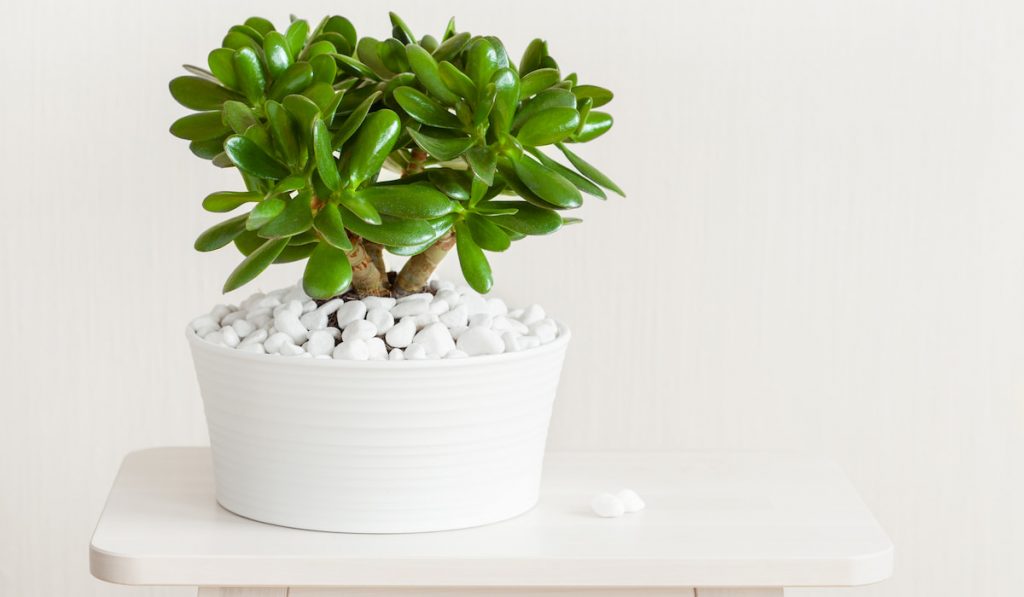
By the principles of Feng Shui, some Crassula Jade species are potent at attracting prosperity.
The species called Money Plant is one of the most popular ones.
Jade features succulent leaves, which gives the plant a lush appearance.
In some cases, it may bloom star-shaped flowers in winter – the flowers are small and can be white or pink.
This would happen when the temperatures are lower, the nights are longer, and the plant has gone weeks without water.
Outdoors, Jade can grow as tall as 8 feet. But inside, they most likely will not reach such heights.
Jade plants are very hardy. Even when you do not care for them, they will thrive.
Some say Jades can live for hundred years.
Golden Pothos
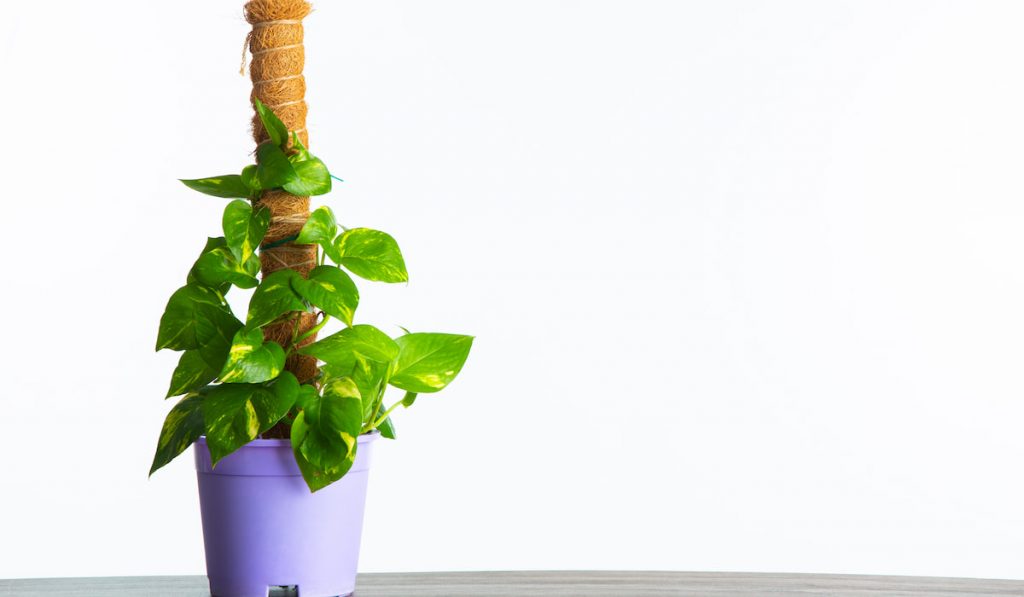
Golden Pothos is also great for the air in your space.
It is a trailing vine with heart-shaped leaves and some lushness to its appearance.
Golden Pothos are easy to propagate, and they can be maintained easily.
Golden Pothos plants are a decent option for corners and the top of cabinets and shelves.
The said spots are said to accumulate dead energy in the home. But with a Golden Pothos filling this space, some positive energy should return.
Lucky Bamboo
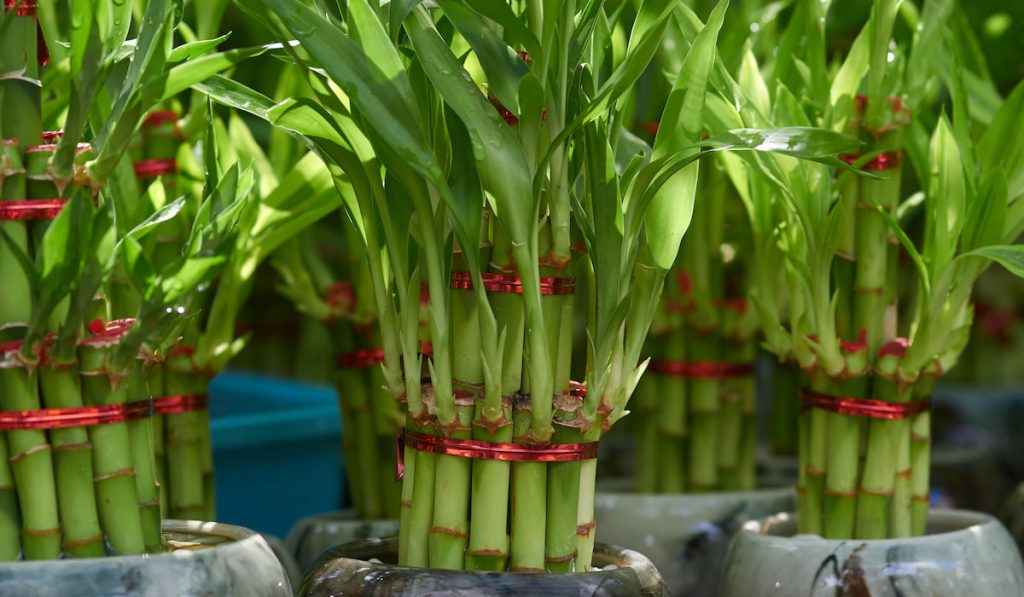
Lucky Bamboo is said to attract prosperity, happiness, growth, fortune, and adaptability.
It is an ornamental houseplant with long stems and long leaves.
In Feng Shui, the number of stalks on a Lucky Bamboo is significant.
Those with three stalks are poised to attract happiness, while those with 2 attract love.
Having 7 stalks represents good health, while 5-6 stalks mean good luck or wealth.
Although Lucky Bamboo seems a bit like true bamboo, it is not one.
In caring for this plant, you must cut the stems back regularly.
Doing this redirects positive energy into the leaves and stalk.
Orchid
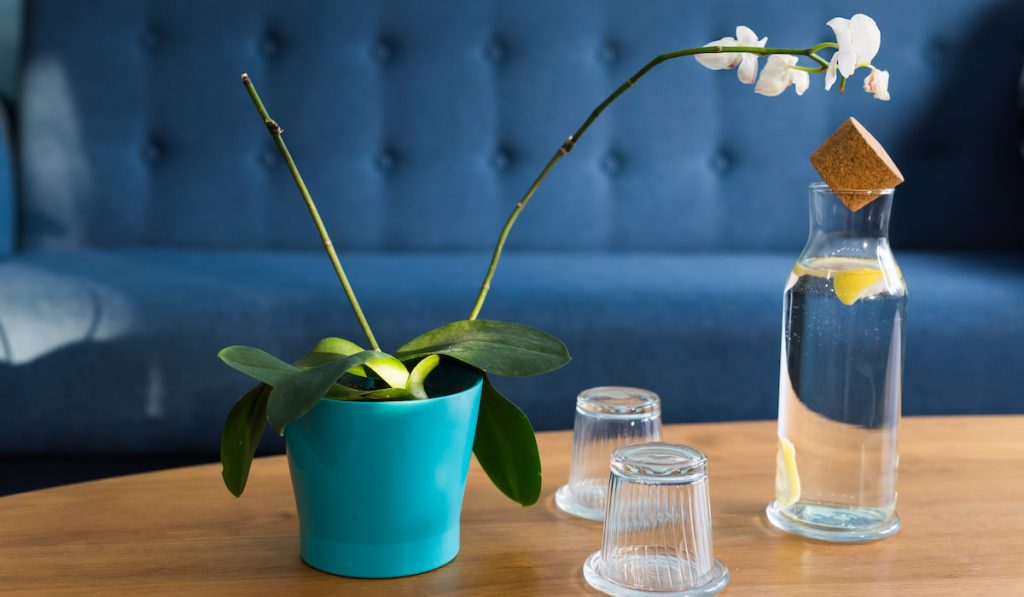
Orchids are not only long-lasting, but they are also beautiful.
Going by Feng Shui principles, Orchids enhance luck as it relates to the family.
It also promotes nurturing and relationship building.
There are many Orchid cultivars to choose from. Each one offers the family positivity you can expect from the group.
While there are many Orchids, you may opt for Phalaenopsis or Paphiopedilum.
These varieties are easy to maintain. They can either be plain white or brightly-colored.
While the former promotes calmness and peace, the latter encourages passion and creativity.
Snake Plant

The Snake Plant (Mother-in-Law’s Tongue) is a succulent with leaves shaped like swords.
It is a great houseplant option for beginners, and it offers some air-purifying properties too.
While some people think the Mother-in-Law’s Tongue is not a good Feng Shui houseplant, it actually is.
It is known to attract luck and protective energy.
The Snake Plant also offers a shield against negative chi.
The Snake Plant is a bit aggressive. So, you must place it in low-traffic areas in your home.
It is recommended that Snake Plants be placed in the eastern, southern, or southeastern corners of your space.
Citrus Tree
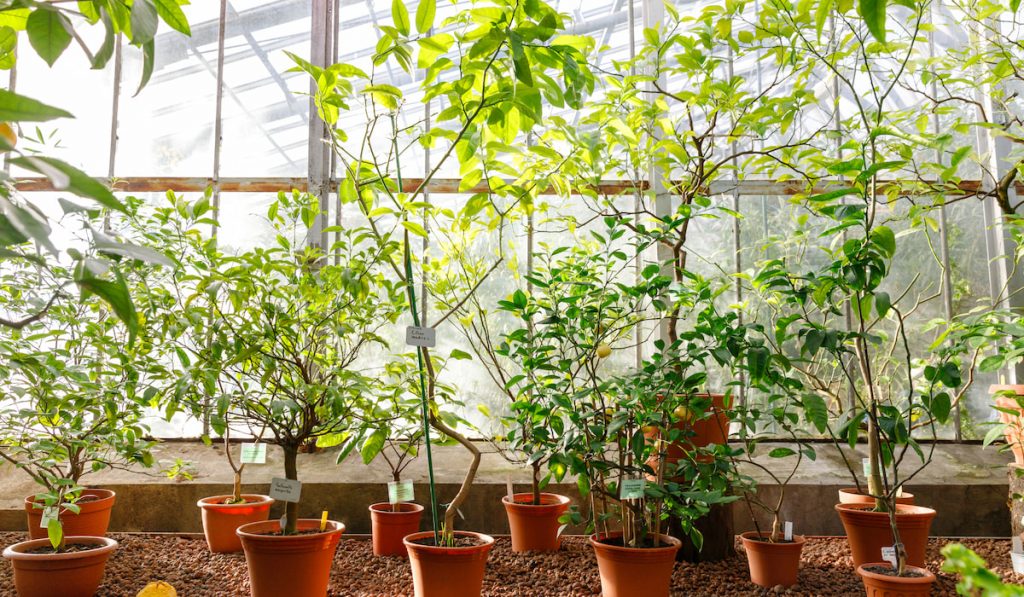
Another Feng Shui plant you can grow indoors is the Citrus Tree. This plant is known for good luck and attracting money.
Some of the citrus trees you can plant in your home include lemon, orange, and lime trees.
These trees are to be grown in small pots, so they do not become too big indoors.
However, if you want them taller, you can encourage their growth.
According to Feng Shui, dwarf lemon trees and dwarf lime trees are the best amongst citrus trees.
Ficus (Rubber Plant)
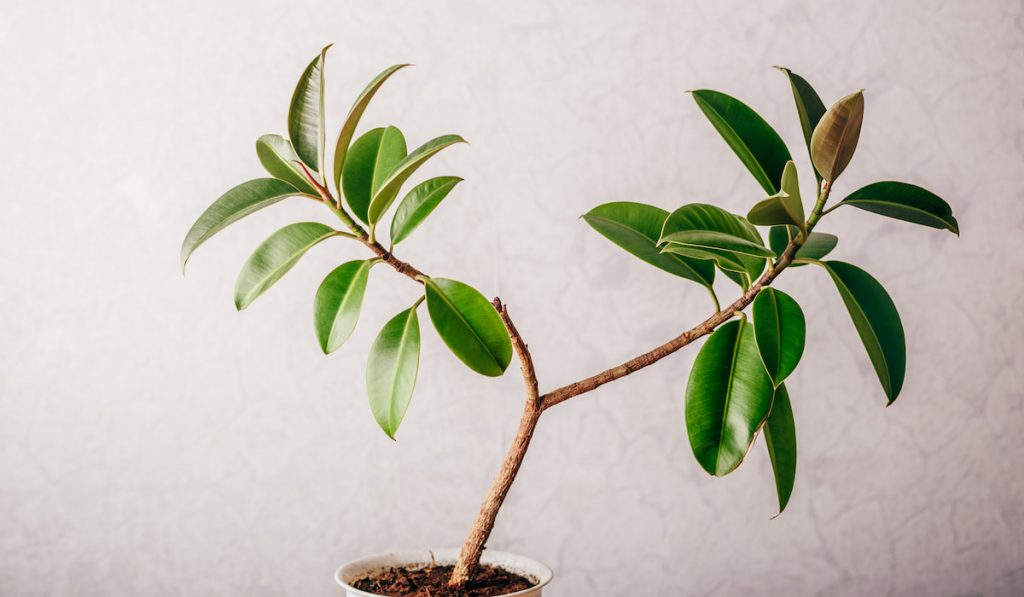
Ficus is also known as Rubber Plant.
It offers air purification while introducing an equipoise between you and your environment.
Ficus is said to bring luck, prosperity, and wealth.
It comes in many varieties, with most having variegated leaves that can be creamy-white, green, or yellow.
Some even have shiny green leaves, while others have burgundy-red leaves.
Rubber Plants used for ornamental purposes come with thick oval leaves.
They make for potent Feng Shui houseplants since rounded leaves are linked with positive energy.
Aloe
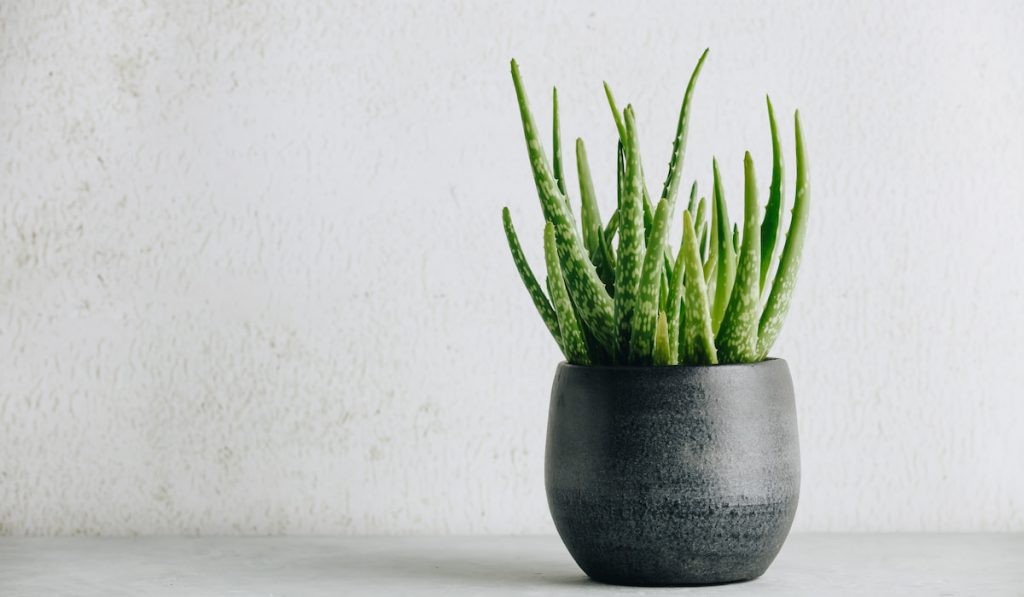
Besides being a worthy therapy for various skin conditions, Aloe is one to bring good luck, harmony, and positive energy to your space.
Aloes are pretty easy to care for. You only need to water them when the soil is utterly dry. But ensure their pot is well-draining.
Aloes thrive on artificial light, so you can place them within 3 feet of your computer.
They do well with 6-8 hours of bright light every morning.
Resources
- https://www.thespruce.com/what-is-feng-shui-1275060
- https://www.thespruce.com/good-and-bad-feng-shui-plants-1274740
- https://leafyplace.com/lucky-plants/
- https://balconygardenweb.com/areca-palm-benefits-facts/
- https://www.rollingnature.com/blogs/news/snake-plant-everything-you-need-to-know
- https://www.ugaoo.com/knowledge-center/feng-shui-plants-for-positive-energy/
- https://omysa.com/blogs/planting-101/9-best-feng-shui-houseplants-for-good-vibes


